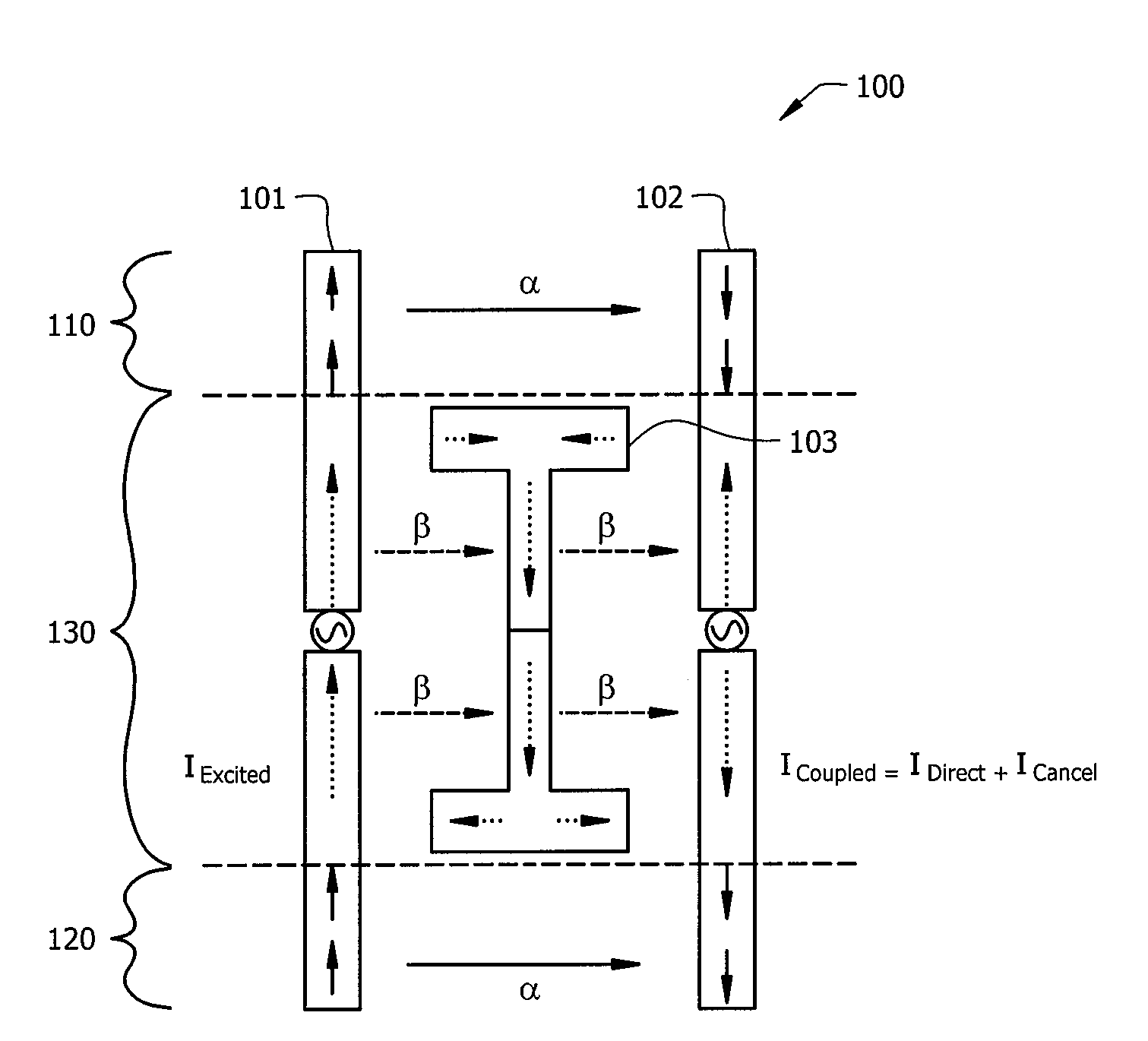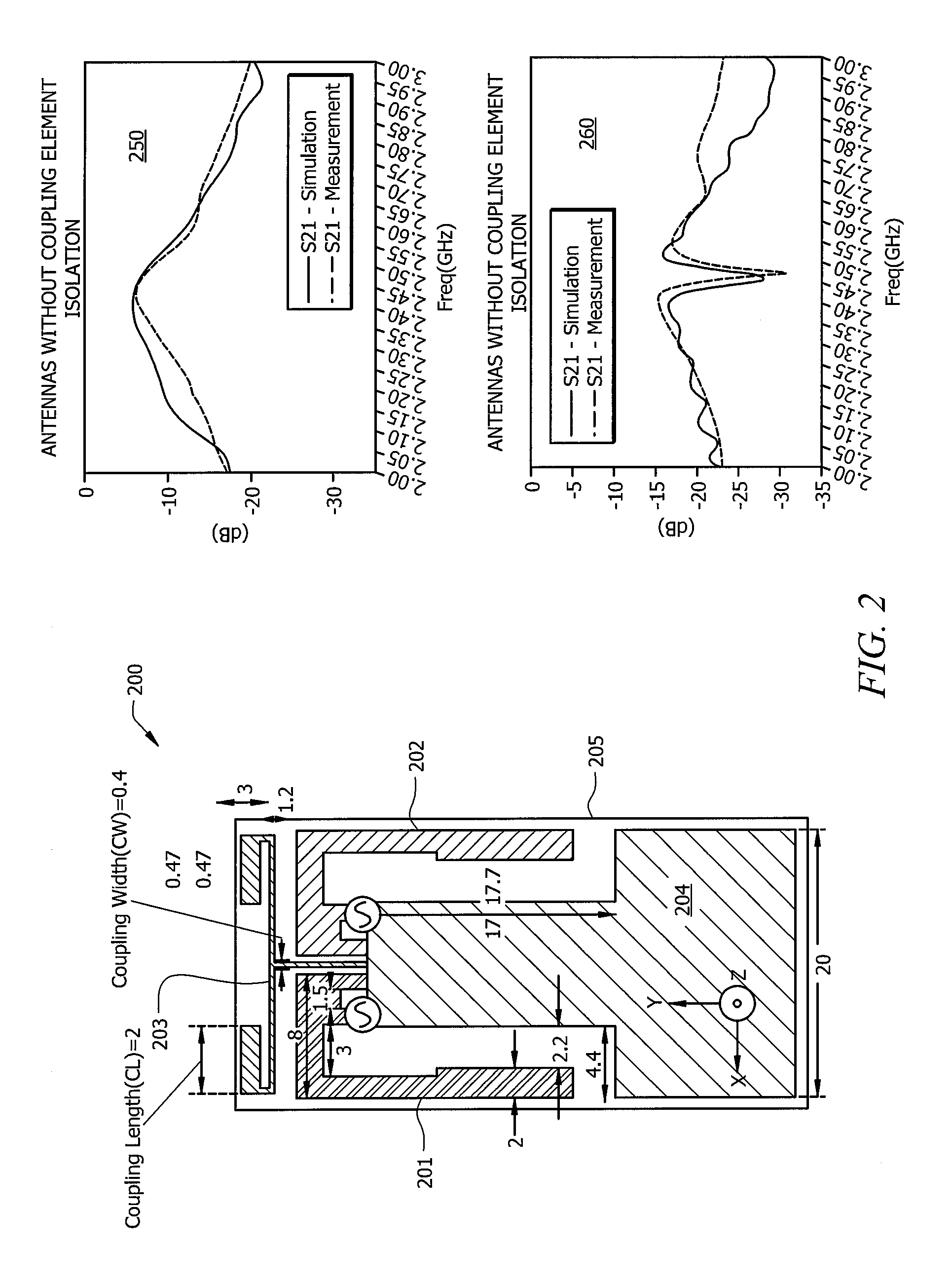Systems and Methods Employing Coupling Elements to Increase Antenna Isolation
a technology of coupling elements and antenna isolation, applied in the field of multi-element antennas, can solve the problems of affecting the amount of mutual coupling between antenna elements, affecting the performance of the antenna, and affecting the space between antenna elements in the system becoming more scarce, so as to achieve the effect of reducing production costs and saving spa
- Summary
- Abstract
- Description
- Claims
- Application Information
AI Technical Summary
Benefits of technology
Problems solved by technology
Method used
Image
Examples
Embodiment Construction
[0017]FIG. 1 is an illustration of exemplary antenna system 100, adapted according to one embodiment of the invention. System 100 includes antenna elements 101 and 102, as well as coupling element 103. In this example, antenna element 101 is driven by a Radio Frequency (RF) feed, and the current in antenna element 101 is IExcited. The total current in antenna element 102 that is due to mutual coupling with antenna element 101 is ICoupled.
[0018]There are three regions of interest in FIG. 1. Region 110 is where coupling element 103 does not lie between antenna elements 101 and 102. In other words, in region 110, each antenna element 101 and 102 is in the other's line of sight. Region 120 is similar to region 110. In region 130, coupling element 103 is positioned between antenna elements 101 and 102.
[0019]In regions 110 and 120, there is direct coupling between antenna elements 101 and 102. The current due to direct coupling is referred to in this example as IDirect, and it is equal to...
PUM
 Login to View More
Login to View More Abstract
Description
Claims
Application Information
 Login to View More
Login to View More - R&D
- Intellectual Property
- Life Sciences
- Materials
- Tech Scout
- Unparalleled Data Quality
- Higher Quality Content
- 60% Fewer Hallucinations
Browse by: Latest US Patents, China's latest patents, Technical Efficacy Thesaurus, Application Domain, Technology Topic, Popular Technical Reports.
© 2025 PatSnap. All rights reserved.Legal|Privacy policy|Modern Slavery Act Transparency Statement|Sitemap|About US| Contact US: help@patsnap.com



